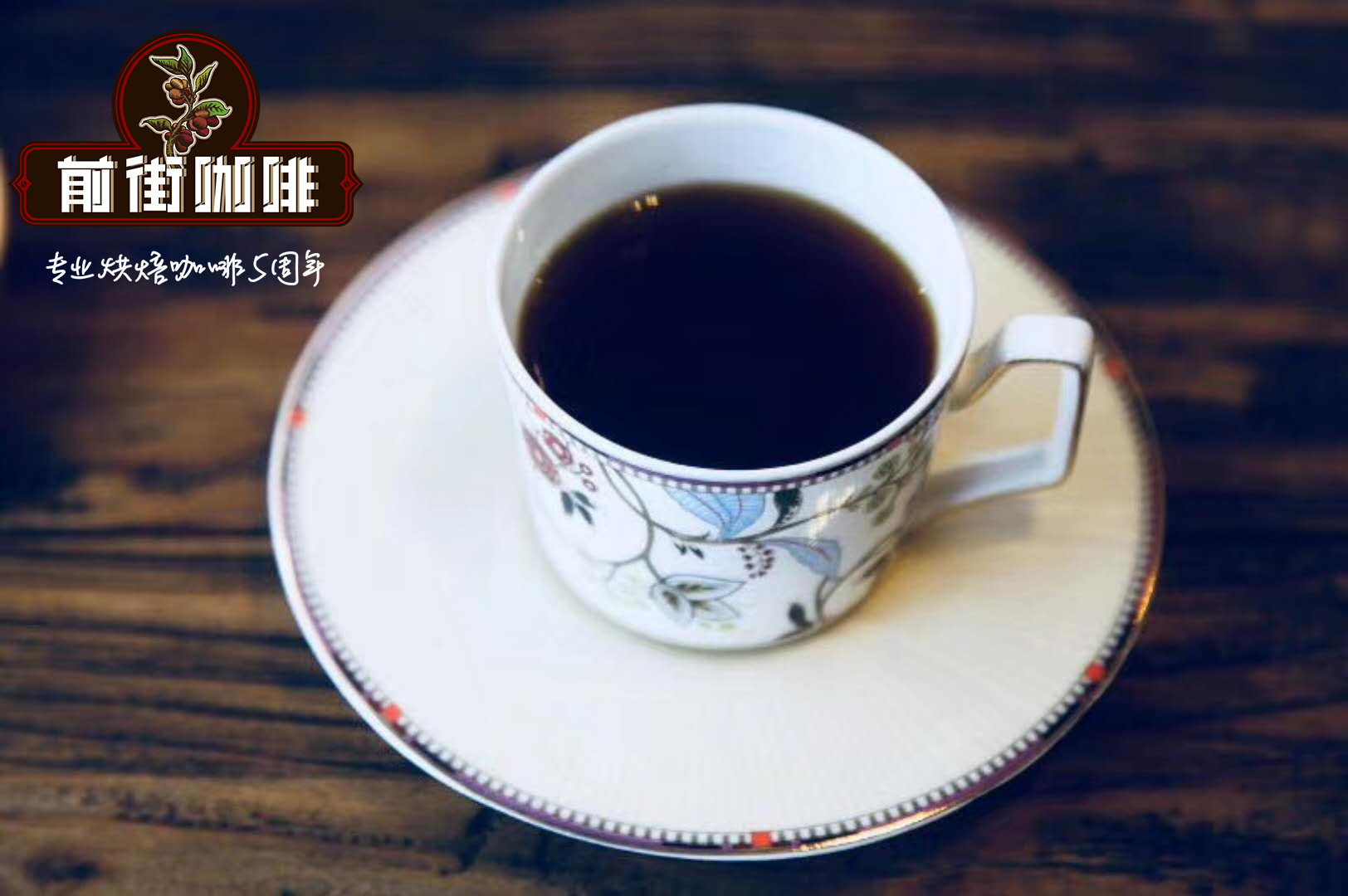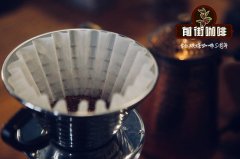What is the share of convenience store coffee in the coffee market? Why choose convenience store coffee?

Professional coffee knowledge exchange more coffee bean information please follow the coffee workshop (Wechat official account cafe_style)
From cafes to convenience stores
For Chinese people, coffee is a very special drink. Traditionally, coffee is imported from the West and a way of life brought to China by western countries. Compared with drinking coffee, China has a tradition of drinking tea for thousands of years. Tea has far more audiences in China than coffee. However, since the reform and opening up, drinking coffee as a modern western way of life has become more and more popular among urban white-collar workers. Most of Han's friends are urban coffee parties, while tea parties like Han have become a minority. The report on Investment Analysis and Prospect of China's Coffee Industry from 2016 to 2020 released by CIC consultants said that coffee is not popular in China, but this populous country with a small coffee market is creating the fastest growth in the world. Coffee consumption is growing at an average rate of more than 25% a year. According to a separate report written by Guanyanxia, according to a growth rate of more than 15% a year alone, China's coffee market will have 300 billion yuan by 2020.
In recent years, with the entry of Starbucks, Costa and other western coffee chains, more and more coffee shops begin to appear on the street corners, and drinking coffee is being contacted by more and more people, but in quite a long period of time, the coffee market has shown an obvious trend of polarization. On the one hand, instant coffee represented by Nestl é has accumulated a large number of users because of its cheap price. It occupies a large market share in the low-end market, and the price of instant coffee is generally less than 5 yuan per cup.
On the other hand, coffee chains represented by Starbucks and Costa and hand-brewed coffee are gradually emerging in the high-end market, drinking coffee is becoming a way of business negotiation, its price is generally more than 20 yuan, generally between 30 and 40 yuan.
However, the mid-range coffee market between 10 yuan and 20 yuan left a blank, until recently this blank market was detonated by the ubiquitous 24-hour convenience stores. Take the family convenience store with the highest market share as an example. According to DT Finance, the family convenience store sold 10 million cups of coffee in 2016, an increase of 140% over the same period last year. In some core stores in the Shanghai area, selling 300 cups of coffee a day is not a problem at all, and this scale even exceeds that of many coffee chains.
According to DT Finance's interview with Heathrow convenience stores, the gross profit margin of this kind of coffee business is as high as 50%. Although it cannot reach the 90% gross profit level of Starbucks and other coffee chains, the huge base of convenience stores and horrific sales are making coffee business the most profitable business type of convenience stores, and many convenience stores have put coffee machines in the most prominent position of the cashier. So that customers can see it for the first time. But why can coffee be a trump card for convenience stores to make money? Brother Han believes that the main reasons are as follows:
One is the rapid upgrading of the pace of life. Drinking coffee in the chain coffee shop around the corner used to be a Western way of life, but in fact, with the increasing pace of life, unless you want to meet friends and talk in the coffee shop, basically few other people can really have a cup of coffee in the coffee shop, and the accelerated pace of work leads to the rapid evolution of demand, which is a direct result of the evolution of demand. That is, more and more coffee chains have become a kind of takeout, with a large number of people either buying and taking away, or directly ordering coffee on the takeout platform to be delivered by the takeout boy. As a result, the demand of the coffee shop has changed from the original pursuit of high-end.
The second is the extreme simplification of demand development. Since MUJI entered China, more and more people began to accept the minimalist way of life, in order to meet the fast-paced, simple and easy-to-use concept of life. More and more people will focus on a few types of coffee, such as latte, American style, Italian concentrate, cappuccino and so on. The centralization of ordering coffee type directly leads to the lowering of the threshold of coffee preparation. Originally, coffee making is a kind of labor with certain technical content, but due to the improvement of the degree of centralization, these problems are gradually not a problem, and the problem can be solved through a professional coffee machine. Fewer varieties make coffee machines popular. Customers don't come here to make impulsive purchases. They often complete the order preset before they go to the convenience store. The basic model has become the dominant coffee variety in convenience stores, which greatly reduces the differentiation and threshold between coffee chains and convenience stores.
The third is the improvement of coffee quality in convenience stores. Around 2010, when convenience store coffee was just launched, the quality of convenience store coffee still lagged behind that of foreign coffee chains, which was only better than instant coffee, but with the continuous development of convenience stores, Arabica coffee beans, pasteurized milk and other quality coffee found in the original coffee shop has become the standard in many convenience stores. These direct improvements in quality make convenience store coffee tend to catch up with coffee shops, but in terms of price, the price of convenience store coffee is only 1/3 to 1/2 of that of Starbucks, Costa and other coffee shops. This price advantage makes a large number of white-collar workers gradually shift their hobbies from coffee shops to convenience stores.
These three points make convenience stores firmly grasp the "rigid demand" consumers, who pursue fast, convenient and cost-effective consumers are constantly pulled from coffee shops to convenience stores, contributing to the success of convenience store coffee. With the rapid growth of convenience store coffee, convenience stores are springing up like bamboo shoots after a spring rain. In many first-tier cities, you can even walk 500 meters to find a convenience store, which makes convenience store coffee readily available. The idea of meeting a cup of coffee around the corner quickly became popular.
Upgrade from convenience store to convenience station
In fact, the development of convenience store coffee is only one aspect of the development of convenience stores. Han once specifically said that convenience stores may be the only way of development beyond e-commerce in this Internet era. Why? It is because e-commerce has always been unable to solve the problem of two-hour consumption, as long as this problem exists, convenience stores will have a chance. Now, more and more convenience stores realize that the convenience store is no longer as simple as an ordinary micro-supermarket, but based on the convenience store to meet the various needs of consumers, so as to achieve the upgrade from selling goods to providing demand services.
We can imagine that when you are tired, the convenience store provides you with a seat to rest, and when your phone is out of power, the convenience store provides you with a charging interface to give you hope. When you walk in the dark on the road at night, a light is still on 24 hours a day, and convenience stores are there when you need it. This is the value of demand for services.
In the past, it was hard for most people to imagine how I could eat in a grocery store. If the convenience store at that time said that they provided food, everyone's idea might be instant noodles. Now, convenience stores such as the whole family, Rosen and 7-Eleven are starting to provide fast food and fast food for consumers, and consumers are willing to eat in the store.
And convenience stores have more and more diverse choices, so that convenience stores have not only steamed buns for simple meals, Steamed Jiaozi, instant rice, Kanto cooking and other food, but also afternoon tea, coffee and other tea drinks with certain quality value, in addition, many convenience stores also have medicine purchasing machines, financial multi-service terminals and other service equipment. Everyone's electricity, electricity and coal payments, telephone charges, money transfers and other financial services can also be completed in convenience stores.
Today's convenience store is more and more like a diversified post station, where almost all the needs can be met, that is, the upgrade from convenience store to convenience station. When the upgrade process is completed, the boundaries of convenience stores are being quickly opened, diversification has become the most effective way of convenience store development, and money is officially coming from this.
Important Notice :
前街咖啡 FrontStreet Coffee has moved to new addredd:
FrontStreet Coffee Address: 315,Donghua East Road,GuangZhou
Tel:020 38364473
- Prev

Dehong Hougu Coffee condition good treatment for Hougu Coffee Company? how much is a box of Hougu coffee?
Professional coffee knowledge exchange more coffee bean information please follow the coffee workshop (Wechat official account cafe_style) the coffee you drink may be provided by Yuxin Europe. The first Chongqing-Xinou Hougu Coffee International Special Train was officially opened on July 16, 15. In the future, Chongqing strives to gather 1/3 (nearly 1 million tons) of European coffee to Chongqing within five years, with Chongqing as the bridgehead.
- Next

How do cafes create a good atmosphere?
Professional coffee knowledge exchange more coffee bean information please follow the coffee workshop (Wechat official account cafe_style) do you know how to make your coffee shop create a good atmosphere and make customers feel more comfortable? As a place to provide leisure, entertainment and parties, the creation of coffee shop atmosphere is very important. Coffee shops in the market competition to rely on outstanding features to win consumers. Know how to be like
Related
- What brand of black coffee is the most authentic and delicious? what are the characteristics of the flavor of the authentic Rose Summer Black Coffee?
- Introduction to the principle and characteristics of the correct use of mocha pot A detailed course of mocha pot brewing coffee is described in five steps.
- Which is better, decaf or regular coffee? how is decaf made?
- How much is a bag of four cat coffee?
- How about four Cat Coffee or Nestle Coffee? why is it a cheap scam?
- Which is better, Yunnan four Cats Coffee or Nestle Coffee? How about cat coffee? is it a fake scam? why is it so cheap?
- How about Cat Coffee? what grade is a hoax? which instant coffee tastes better, four Cat Coffee, Nestle Coffee or G7 coffee?
- Process flow chart of coffee making-Starbucks coffee making process what coffee tastes good at Starbucks
- The top ten best coffee beans in the world Rose summer coffee or Tanzanian coffee tastes good
- Yunnan four cat coffee is good to drink?_four cat coffee is a big brand? four cat blue mountain coffee is fake?

